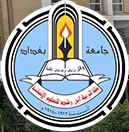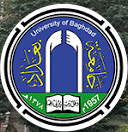Abstract
The city of Al-Kadhimiya became prominent throughout history through the presence of the shrines of Imam Musa Al-Kadhim (peace be upon him) and Muhammad Al-Jawad (peace be upon him), which became a destination for Shiite visitors who came to it from all sides. In addition, there is the presence of major religious authorities who played a major and effective role in influencing Iraq’s political conditions in general, and the Kadhimi society in particular.
Due to the importance of Al-Kadhimiya and its being one of the most important districts in the city of Baghdad, many administrative inspectors visited it during the period 1934-1937, and they inspected all parts of the district and gave information about the administrative conditions in terms of the mayor and the municipal council. The inspectors also submitted reports to the Ministry of Interior on security and the number of police personnel. And records of cases in the centers affiliated with the judiciary. In addition, they regularly visited health centers in the district and presented a picture of the health situation there. On the other hand, the municipality had a large share of visiting inspectors, following up on the progress of work there, reviewing the work of engineers there, and uncovering cases of financial corruption. We must not overlook the importance of education, which plays a major role in the progress and renaissance of nations.
The research attempts to answer several questions, including: The location of the city of Al-Kadhimiya? Why was it called that? And knowing its position on the British occupation and the installation of King Faisal I? Also know the administrative conditions there? And addressing the security and health situation in Al-Kadhimiya?
Article Type
Article
First Page
201
Last Page
220
Publication Date
6-15-2024
Creative Commons License

This work is licensed under a Creative Commons Attribution 4.0 International License.
Recommended Citation
Shimal, sundus jamal
(2024)
"Al-Kadhimiya District in Administrative Inspection Reports 1934-1937,"
Alustath Journal for Human and Social Sciences: Vol. 63:
Iss.
2, Article 16.
DOI: 10.36473/z3rr7n07
Available at:
https://alustath.researchcommons.org/journal/vol63/iss2/16










